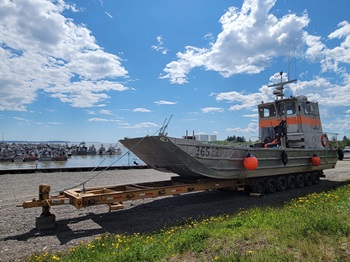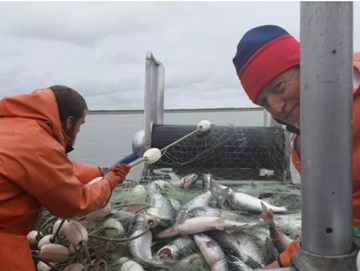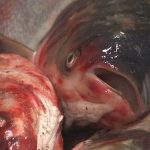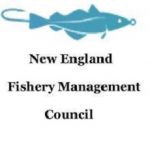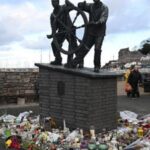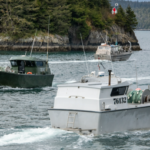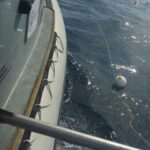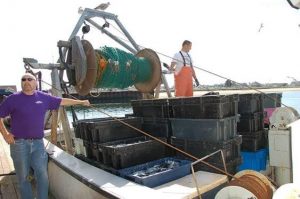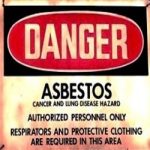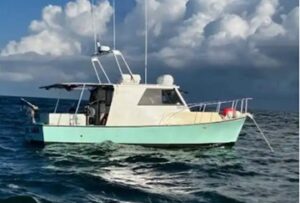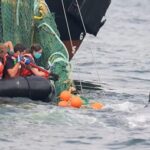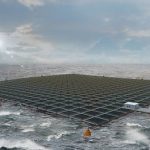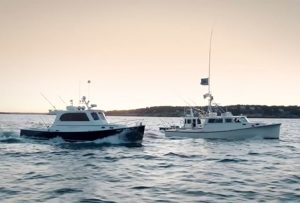Tag Archives: Bristol Bay
Remembering Mason Evich: GoFundMe set up for Fairhaven man killed in head-on crash
 Friends and family of 28-year-old Mason Evich remember him as someone who will be deeply missed by all who had the privilege of knowing him. The commercial fisherman tragically lost his life in a head-on crash on the New Bedford-Fairhaven Bridge on Feb. 20, and heartfelt tributes are flooding in to honor his memory. A GoFundMe, Honoring Mason’s Life with Love, was started by Ryley Santos as a tribute to Evich. To date it has raised more than $58,000, exceeding the initial $25,000 goal. A group of friends got together and wrote a tribute to Evich on GoFundMe. Links, more, >>CLICK TO READ 06:53
Friends and family of 28-year-old Mason Evich remember him as someone who will be deeply missed by all who had the privilege of knowing him. The commercial fisherman tragically lost his life in a head-on crash on the New Bedford-Fairhaven Bridge on Feb. 20, and heartfelt tributes are flooding in to honor his memory. A GoFundMe, Honoring Mason’s Life with Love, was started by Ryley Santos as a tribute to Evich. To date it has raised more than $58,000, exceeding the initial $25,000 goal. A group of friends got together and wrote a tribute to Evich on GoFundMe. Links, more, >>CLICK TO READ 06:53
Commercial Fisherman Mason C. Evich, 28, of Fairhaven died February 20, 2025. He was a devoted son, brother, and loyal friend.
 He was everything wonderful. If you were lucky enough to know Mason, you LOVED him. A beacon of kindness, with a gentle soul that touched everyone he met, the pain we feel in losing him is indescribable. Born in Seattle, Washington, Mason was the loving son of Dagne (Sovik) Evich and the late Adam Evich. Mason’s love for fishing was passed down from his father, a lifelong commercial fisherman. Each summer, Mason accompanied his dad to Bristol Bay, Alaska, where they salmon fished together on the family’s fishing vessel. After graduating from Fairhaven High School, Mason attended the Northeast Maritime Institute, where he earned his associate degree and captain’s license. He later worked as a mate on commercial fishing vessels out of Cape May, NJ, and New Bedford, MA. more, >>CLICK TO READ<< 14:28
He was everything wonderful. If you were lucky enough to know Mason, you LOVED him. A beacon of kindness, with a gentle soul that touched everyone he met, the pain we feel in losing him is indescribable. Born in Seattle, Washington, Mason was the loving son of Dagne (Sovik) Evich and the late Adam Evich. Mason’s love for fishing was passed down from his father, a lifelong commercial fisherman. Each summer, Mason accompanied his dad to Bristol Bay, Alaska, where they salmon fished together on the family’s fishing vessel. After graduating from Fairhaven High School, Mason attended the Northeast Maritime Institute, where he earned his associate degree and captain’s license. He later worked as a mate on commercial fishing vessels out of Cape May, NJ, and New Bedford, MA. more, >>CLICK TO READ<< 14:28
Commercial salmon fishers struggle with low prices
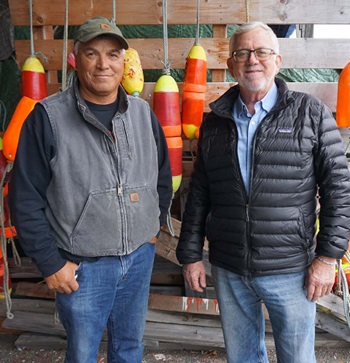 With the commercial salmon season coming to an end, 2024 is shaping up to be a lean year for commercial salmon fishers up and down the West Coast. That’s largely because prices for salmon that fishers receive at the dock are at an unusual low. Warren “Buck” Gibbons lives in Bellingham and has been fishing for sockeye in Bristol Bay, Alaska, since 1976. In a good year, Gibbons said, a Bristol Bay sockeye fisher can gross $300,000–400,000 (they take home less after expenses). But when prices are as low as they were this summer, they’ll gross about $100,000 (again, the take-home pay is less). For a fisher working on a smaller scale, including many tribal fishers, the situation is even grimmer. Dana Wilson of the Lummi Nation said that with prices so low, it hasn’t been worth selling salmon for the last couple years. He now keeps his entire catch to feed his own family and relies mostly on crab for income. more, >>CLICK TO READ<< 13:25
With the commercial salmon season coming to an end, 2024 is shaping up to be a lean year for commercial salmon fishers up and down the West Coast. That’s largely because prices for salmon that fishers receive at the dock are at an unusual low. Warren “Buck” Gibbons lives in Bellingham and has been fishing for sockeye in Bristol Bay, Alaska, since 1976. In a good year, Gibbons said, a Bristol Bay sockeye fisher can gross $300,000–400,000 (they take home less after expenses). But when prices are as low as they were this summer, they’ll gross about $100,000 (again, the take-home pay is less). For a fisher working on a smaller scale, including many tribal fishers, the situation is even grimmer. Dana Wilson of the Lummi Nation said that with prices so low, it hasn’t been worth selling salmon for the last couple years. He now keeps his entire catch to feed his own family and relies mostly on crab for income. more, >>CLICK TO READ<< 13:25
Celebrate wild sockeye salmon — the harvest that powers Bristol Bay’s economy and feeds the world
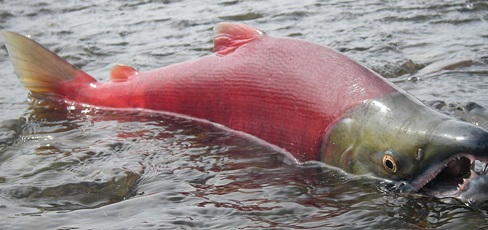 It’s the time of year again when children have returned to school and seemingly endless daylight gives way to shorter days and cooler nights. In the Bristol Bay region of Alaska, it is viewed less as the end of another summer, and more as the end of another salmon season. Many weeks of hard work harvesting and preserving tens of millions of salmon to feed our families, communities and the rest of the world has come to an end. I can’t think of a better time to pause and celebrate Bristol Bay’s wild salmon. We celebrate the incredible journey every single salmon makes; traveling thousands of miles in its life to return to its birthplace and complete the cycle of life. Over the week of Sept. 9, a diverse coalition of commercial fishermen, business leaders, lodge owners, Alaska Native people and others, all from the Bristol Bay region, is bringing this celebration to the nation’s capital. more, >>CLICK TO READ<<10:15
It’s the time of year again when children have returned to school and seemingly endless daylight gives way to shorter days and cooler nights. In the Bristol Bay region of Alaska, it is viewed less as the end of another summer, and more as the end of another salmon season. Many weeks of hard work harvesting and preserving tens of millions of salmon to feed our families, communities and the rest of the world has come to an end. I can’t think of a better time to pause and celebrate Bristol Bay’s wild salmon. We celebrate the incredible journey every single salmon makes; traveling thousands of miles in its life to return to its birthplace and complete the cycle of life. Over the week of Sept. 9, a diverse coalition of commercial fishermen, business leaders, lodge owners, Alaska Native people and others, all from the Bristol Bay region, is bringing this celebration to the nation’s capital. more, >>CLICK TO READ<<10:15
Community steps up after family loses father in Alaska fishing accident
 Cheyenne Hoy keeps her husband’s shoes and hat in their bedroom. The camouflage-patterned Crocs and ball cap have become some of the most important and precious items for her. They were what Clayton Hoy, 36, was wearing when he fell overboard from his salmon fishing vessel early on the morning of July 25 near Egegik, Alaska, on the east side of Bristol Bay. He wasn’t wearing a life jacket at the time and his crew heard the splash when their captain hit water. The crew of the F/V Warmaster radioed for help at 2:45 a.m. and the United States Coast Guard, Alaska Wildlife Trooper and Good Samaritan boats searched the water for a day and a half before the search was suspended, according to KDLG, the public radio station in Bristol Bay. “We were all very hopeful, but it didn’t turn out that way,” Cheyenne said. Clayton’s shoes were found a few days later in a mudbank by local volunteers who were searching by boat and by foot for the fisherman. Photos, more, >>CLICK TO READ<< 06:46
Cheyenne Hoy keeps her husband’s shoes and hat in their bedroom. The camouflage-patterned Crocs and ball cap have become some of the most important and precious items for her. They were what Clayton Hoy, 36, was wearing when he fell overboard from his salmon fishing vessel early on the morning of July 25 near Egegik, Alaska, on the east side of Bristol Bay. He wasn’t wearing a life jacket at the time and his crew heard the splash when their captain hit water. The crew of the F/V Warmaster radioed for help at 2:45 a.m. and the United States Coast Guard, Alaska Wildlife Trooper and Good Samaritan boats searched the water for a day and a half before the search was suspended, according to KDLG, the public radio station in Bristol Bay. “We were all very hopeful, but it didn’t turn out that way,” Cheyenne said. Clayton’s shoes were found a few days later in a mudbank by local volunteers who were searching by boat and by foot for the fisherman. Photos, more, >>CLICK TO READ<< 06:46
Illegal fishing shuts down Egegik district
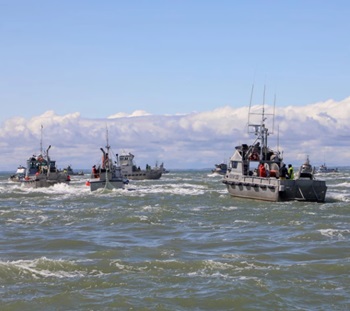 In Bristol Bay’s Egegik district, it’s not uncommon to see some boats illegally fishing over the line. But this year seemed particularly bad, according to the Alaska Department of Fish and Game. “We were receiving daily phone calls between Fish and Game and wildlife troopers, you know, multiple boats upwards of fifty at a time fishing outside of the district,” Tiernan said. That’s state biologist Aaron Tiernan. He says that during the peak of the season, extra Alaska State Troopers flood Bristol Bay from around the state. It’s a big effort. But as fishing winds down, the Alaska Department of Fish and Gamey start leaving to patrol other areas. “More and more reports come in. Because there’s less, there’s less enforcement going on overall. And we need to try to protect stocks that are going north and south or even into Egegik,” Tiernan said. So, in response, he decided to shut the fishery down. more, >>CLICK TO READ<< 14:39
In Bristol Bay’s Egegik district, it’s not uncommon to see some boats illegally fishing over the line. But this year seemed particularly bad, according to the Alaska Department of Fish and Game. “We were receiving daily phone calls between Fish and Game and wildlife troopers, you know, multiple boats upwards of fifty at a time fishing outside of the district,” Tiernan said. That’s state biologist Aaron Tiernan. He says that during the peak of the season, extra Alaska State Troopers flood Bristol Bay from around the state. It’s a big effort. But as fishing winds down, the Alaska Department of Fish and Gamey start leaving to patrol other areas. “More and more reports come in. Because there’s less, there’s less enforcement going on overall. And we need to try to protect stocks that are going north and south or even into Egegik,” Tiernan said. So, in response, he decided to shut the fishery down. more, >>CLICK TO READ<< 14:39
Bristol Bay floating fish processor back at full capacity after fire
 The Hannah, operated by startup Northline Seafoods, arrived in the region earlier this year. It uses super-cold spiral freezers to quickly freeze fish and then store them on board until the end of the season. But just before Bristol Bay’s salmon season hit its peak, one of those spiral freezers had an electrical fire. Because of the June 30 blaze, the Hannah has operated at reduced capacity for the last two weeks. On Wednesday, Northline announced that the freezer had been repaired. With that fix, the startup’s floating processing vessel is back to full capacity. “We definitely missed a few days of the peak, which we can’t get back. But we intend to continue to buy hopefully into the fall here,” said Northline CEO Ben Blakey. more, >>CLICK TO READ<< 10:17
The Hannah, operated by startup Northline Seafoods, arrived in the region earlier this year. It uses super-cold spiral freezers to quickly freeze fish and then store them on board until the end of the season. But just before Bristol Bay’s salmon season hit its peak, one of those spiral freezers had an electrical fire. Because of the June 30 blaze, the Hannah has operated at reduced capacity for the last two weeks. On Wednesday, Northline announced that the freezer had been repaired. With that fix, the startup’s floating processing vessel is back to full capacity. “We definitely missed a few days of the peak, which we can’t get back. But we intend to continue to buy hopefully into the fall here,” said Northline CEO Ben Blakey. more, >>CLICK TO READ<< 10:17
Electrical fire aboard the Hannah reduces Northline Seafood’s processing capacity
 A steady stream of frozen, whole fish emerges from a large spiral freezer. Each fish landing on a conveyor belt gets whisked away to the next stage in the production line. These frozen fish are some of the first sockeye salmon deliveries of the season from Bristol Bay fishing vessels to the Hannah — Northline Seafood’s brand-new floating freezer barge in the region. But on Sunday, June 30, an electrical fire under one of the Hannah’s freezers threw a wrench in that plan. According to Northline, the vessel’s team of marine firefighters were the first to respond to the incident and extinguish the fire. No one was injured. more, >>CLICK TO READ<< 08:45
A steady stream of frozen, whole fish emerges from a large spiral freezer. Each fish landing on a conveyor belt gets whisked away to the next stage in the production line. These frozen fish are some of the first sockeye salmon deliveries of the season from Bristol Bay fishing vessels to the Hannah — Northline Seafood’s brand-new floating freezer barge in the region. But on Sunday, June 30, an electrical fire under one of the Hannah’s freezers threw a wrench in that plan. According to Northline, the vessel’s team of marine firefighters were the first to respond to the incident and extinguish the fire. No one was injured. more, >>CLICK TO READ<< 08:45
Bristol Bay Fisheries Report: July 3, 2024
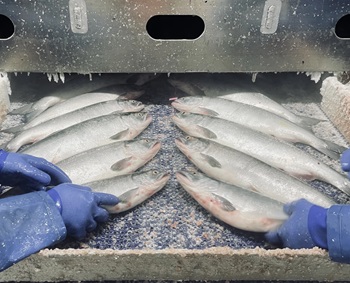 The baywide catch yesterday was 860,000, with over half of those fish coming from the Nushagak district. Egegik daily catch numbers more than doubled, with big average drift deliveries. Test fishery crews out at Port Moller report another day of increased catch indices, and say with those numbers, a larger and later run is more likely. An electrical fire damaged one of three spiral freezers aboard the Hannah on Sunday, June 30 2024. That’s Northline Seafood’s new floating processor, which is anchored in Bristol Bay’s Nushagak district this salmon season. The vessel is currently operating at a reduced capacity, although other processors are taking on some of Northline’s fleet. more, >>CLICK TO READ<< 10:14
The baywide catch yesterday was 860,000, with over half of those fish coming from the Nushagak district. Egegik daily catch numbers more than doubled, with big average drift deliveries. Test fishery crews out at Port Moller report another day of increased catch indices, and say with those numbers, a larger and later run is more likely. An electrical fire damaged one of three spiral freezers aboard the Hannah on Sunday, June 30 2024. That’s Northline Seafood’s new floating processor, which is anchored in Bristol Bay’s Nushagak district this salmon season. The vessel is currently operating at a reduced capacity, although other processors are taking on some of Northline’s fleet. more, >>CLICK TO READ<< 10:14
How a seagoing mentorship program trains ‘greenhorns’ and changes lives
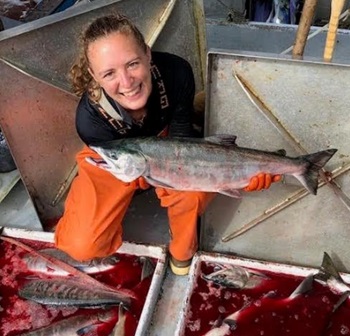 As a student at Vermont’s Middlebury College, Lea LeGardeur loved being on the water. Which proved an asset for LeGardeur, who, after teaching geography at Middlebury, decided to commercial fish in Alaska. LeGardeur’s break came when she discovered the Alaska Longline Fishermen’s Association, or ALFA, based in the small fishing town of Sitka, Alaska. The organization had an extensive record of fighting foreign fishing, trawling and depletion of resources. ALFA had recently secured a grant to fund its Crew Training Program, or CTP. The program was the brainchild of Karl Jordan, who suggested the concept to his father, Eric, shortly after Eric’s wife, Sarah, announced her decision to retire from fishing. Jordan père went on to propose the concept to Linda Behnken, the executive director at ALFA. Photos, Video, more, >>CLICK TO READ<< 07:50
As a student at Vermont’s Middlebury College, Lea LeGardeur loved being on the water. Which proved an asset for LeGardeur, who, after teaching geography at Middlebury, decided to commercial fish in Alaska. LeGardeur’s break came when she discovered the Alaska Longline Fishermen’s Association, or ALFA, based in the small fishing town of Sitka, Alaska. The organization had an extensive record of fighting foreign fishing, trawling and depletion of resources. ALFA had recently secured a grant to fund its Crew Training Program, or CTP. The program was the brainchild of Karl Jordan, who suggested the concept to his father, Eric, shortly after Eric’s wife, Sarah, announced her decision to retire from fishing. Jordan père went on to propose the concept to Linda Behnken, the executive director at ALFA. Photos, Video, more, >>CLICK TO READ<< 07:50
Bristol Bay Fishermen Cautiously Optimistic About 2024 Season Citing Higher Prices, New Processor
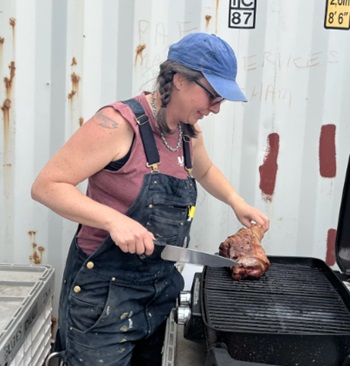 This season, the Bristol Bay 2024 sockeye salmon forecast estimates a total run of 39 million fish. That’s 35% smaller than the most recent 10-year average run size, and a drop from last season’s 54.5 million fish run. This weekend in Dillingham, the boatyard and harbor were noticeably quieter, with some discussion of crews holding off on big renovations and putting boats in the water later, to help cut costs and recover from last season’s low prices. But despite the lower forecast and market uncertainty, crews seem cautiously optimistic headed into the new season. Meghan Gervais, a long time captain of the F/V Maru takes a break from boat repairs to get out the grill. Gervais talks about her hopes for the coming season as she turns over a leg of lamb on the grill for family dinner, who is crewing with her this year. She’s been working on boats in Bristol Bay since 2006. “I feel cautiously optimistic,” Gervais said. Photos, more, >>CLICK TO READ<< 13:33
This season, the Bristol Bay 2024 sockeye salmon forecast estimates a total run of 39 million fish. That’s 35% smaller than the most recent 10-year average run size, and a drop from last season’s 54.5 million fish run. This weekend in Dillingham, the boatyard and harbor were noticeably quieter, with some discussion of crews holding off on big renovations and putting boats in the water later, to help cut costs and recover from last season’s low prices. But despite the lower forecast and market uncertainty, crews seem cautiously optimistic headed into the new season. Meghan Gervais, a long time captain of the F/V Maru takes a break from boat repairs to get out the grill. Gervais talks about her hopes for the coming season as she turns over a leg of lamb on the grill for family dinner, who is crewing with her this year. She’s been working on boats in Bristol Bay since 2006. “I feel cautiously optimistic,” Gervais said. Photos, more, >>CLICK TO READ<< 13:33
Bristol Bay’s 2023 year in review
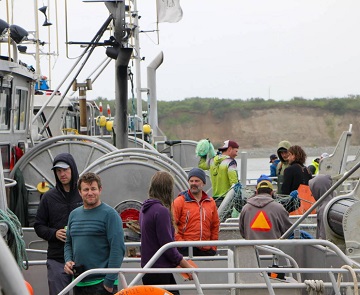 January started out with communities contending with an egg shortage, as an outbreak of avian flu in Washington state drastically slowed shipments north. Slavii stars circulated around the region for Orthodox Christmas with some precautions in place to protect community members from the flu virus and Covid-19. Dozens of people attended the Bristol Bay Native Corporation’s free online language classes in Yup’ik, Dena’ina and Alutiiq. The corporation also offered song and dance classes. And at the end of the month, many in Bristol Bay saw a years-long effort validated with the Environmental Protection Agency vetoing the controversial Pebble Mine project. Photos, more, >>click to read<< 12:35
January started out with communities contending with an egg shortage, as an outbreak of avian flu in Washington state drastically slowed shipments north. Slavii stars circulated around the region for Orthodox Christmas with some precautions in place to protect community members from the flu virus and Covid-19. Dozens of people attended the Bristol Bay Native Corporation’s free online language classes in Yup’ik, Dena’ina and Alutiiq. The corporation also offered song and dance classes. And at the end of the month, many in Bristol Bay saw a years-long effort validated with the Environmental Protection Agency vetoing the controversial Pebble Mine project. Photos, more, >>click to read<< 12:35
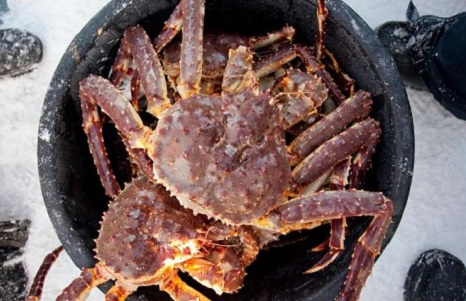
Bristol Bay red king crab, tanner crab fisheries open Sunday
The Bristol Bay red king crab fishery is back on track, after being closed for two years, with a total allowable catch of 2.15 million pounds – just a bit lower than when it was last opened in 2020 at 2.6 million pounds. The announcement on Friday, Oct. 6, was cheered by crab captains and Alaska Bering Sea Crabbers, as a way to get back out doing what they loved, pay some bills, and keep crew working, all while keeping the crab resource sustainable for generations to come. Veteran crabber Glenn Casto, captain of the FV Pinnacle, called it a start in the right direction, that will help pay some bills and help out crew. >>click to read<< 08:20
Alaska fishermen will be allowed to harvest lucrative red king crab in the Bering Sea
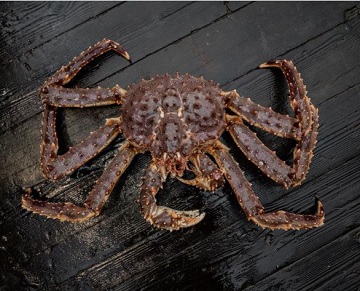 Alaska fishermen will be able to harvest red king crab for the first time in two years, offering a slight reprieve to the beleaguered fishery beset by low numbers likely exacerbated by climate change. There was no such rebound for snow crab, however, and that fishery will remain closed for a second straight year, the Alaska Department of Fish and Game announced Friday. “The Bristol Bay red king crab fishery for the prior two seasons were closed based on low abundance and particularly low abundance of mature-sized female crabs,” said Mark Stichert, the state department’s ground fish and shellfish management coordinator, “Based on survey results from this year, those numbers have improved, some signs of modest optimism in terms of improving abundance in Bristol Bay red king crab overall and that has allowed for a small but still conservative fishery for 2023 as the total population size is still quite low,” he said. >>click to read<<11:52
Alaska fishermen will be able to harvest red king crab for the first time in two years, offering a slight reprieve to the beleaguered fishery beset by low numbers likely exacerbated by climate change. There was no such rebound for snow crab, however, and that fishery will remain closed for a second straight year, the Alaska Department of Fish and Game announced Friday. “The Bristol Bay red king crab fishery for the prior two seasons were closed based on low abundance and particularly low abundance of mature-sized female crabs,” said Mark Stichert, the state department’s ground fish and shellfish management coordinator, “Based on survey results from this year, those numbers have improved, some signs of modest optimism in terms of improving abundance in Bristol Bay red king crab overall and that has allowed for a small but still conservative fishery for 2023 as the total population size is still quite low,” he said. >>click to read<<11:52
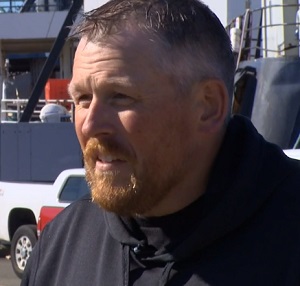
Alaska cancels snow crab harvest again due to population concerns
Crabbers from the Pacific Northwest who fish in Alaska had been watching and waiting for recommendations from the North Pacific Fishery Management Council, which met Thursday and Friday. Following the meetings, the Alaska Department of Fish and Game said Bering snow crab season will be closed for 2023-2024; Bristol Bay red king crab will open. Tanner crab will also be open for commercial fishermen. Both the snow crab and Bristol Bay red king crab seasons were closed in 2023. Crabbers and industry associations warned of the massive impact the decision would have on many small businesses, prompting calls by Congressional officials for an emergency declaration and federal aid. Video, >>click to read<< 08:18

Bristol Bay red king crab fishery could return after two years on ice
The Alaska Department of Fish and Game is set to decide Friday whether or not to reopen the Bristol Bay red king crab fishery, which has been closed since 2021. Their decision will be based on recommendations from the North Pacific Fishery Management Council, which is meeting through Oct. 11 in Anchorage. During the Council’s meeting Tuesday, the Crab Plan Team presented data and analysis on Bristol Bay crab stocks from the summer trawl survey to the Scientific and Statistical Committee. Mike Litzow is a co-chair for the team and the shellfish assessment program manager and director at the National Oceanic and Atmospheric Administration’s Kodiak Lab. Litzow said while male and female crab are still at historic lows, the fishery is not at or approaching an “overfished” status. >>click to read<< 08:48
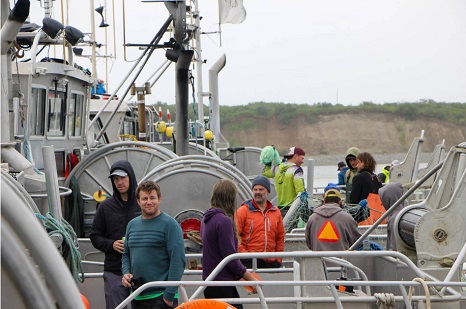
A 50-year situation: the market dynamic between fishing fleets and processors in Bristol Bay
This year, Bristol Bay’s 50 cents per pound base price had fleet members questioning the industry’s longevity. The dynamic between fleets and processors has existed for decades, with permit-holding fishing crews delivering their catch before knowing its cost, and processors relying on them to do so. KDLG’s Christina McDermott sat down with economist Gunnar Knapp, who spent decades studying Bristol Bay’s salmon markets, to learn more about the history of this relationship, and what it means going forward. Christina McDermott: Just a little background: this past summer, many fleet members were upset when the price was announced at 50 cents per pound, which is the lowest in the past 40 years when adjusted for inflation. The announcement came fairly late in the season. There was protest, and there was a lot of discussion on the processors’ respective power to set that price. And I’m interested in going back a little bit. What opportunities [did] the fleet have to sell their fish 50 years ago, let’s say, or 20 years ago? Has it always [been] this relationship [that] there are these processors and there are these fishermen? >>click to read<< 10:00
Bristol Bay fleets call for greater price transparency
 There’s a multi-decade precedent for Bristol Bay salmon processors to wait until the season is underway to announce what they’re willing to pay. Peter Pan shook up the industry in 2021 and 2022 by announcing a base price at the start of the season, but this year waited until mid-July, along with other processors in the region. Captain Konrad Schaad, of the Fishing Vessel Skua, says this model hurts fishers. “The producer gets paid what’s left over. We produce the fish and then it gets processed and sold and everything and everybody gets their cut, and then the morsels that are leftover, they give to us. There should be a fixed cost for what we produce here,” he said. In Bristol Bay, commercial fishing crews fish on what’s called an ‘open ticket. >click to read< 12:53
There’s a multi-decade precedent for Bristol Bay salmon processors to wait until the season is underway to announce what they’re willing to pay. Peter Pan shook up the industry in 2021 and 2022 by announcing a base price at the start of the season, but this year waited until mid-July, along with other processors in the region. Captain Konrad Schaad, of the Fishing Vessel Skua, says this model hurts fishers. “The producer gets paid what’s left over. We produce the fish and then it gets processed and sold and everything and everybody gets their cut, and then the morsels that are leftover, they give to us. There should be a fixed cost for what we produce here,” he said. In Bristol Bay, commercial fishing crews fish on what’s called an ‘open ticket. >click to read< 12:53
Bristol Bay drift permits drop in value
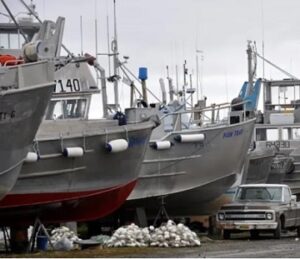 Just a few months ago, a permit for driftnet salmon in Bristol Bay went for over $225,000. There were many in that general price range late last fall. This month, the prices at permit brokerages show that some are being offered for as little as $140,000, more than a one-third drop in value. The price for commercial fishing permits goes up and down through time. In 2020, Bristol Bay drift permits could be found for between $170,000 and $180,000. Then they went up, and now they are down. >click to read< 19:43
Just a few months ago, a permit for driftnet salmon in Bristol Bay went for over $225,000. There were many in that general price range late last fall. This month, the prices at permit brokerages show that some are being offered for as little as $140,000, more than a one-third drop in value. The price for commercial fishing permits goes up and down through time. In 2020, Bristol Bay drift permits could be found for between $170,000 and $180,000. Then they went up, and now they are down. >click to read< 19:43
Bristol Bay Sees Strong Wild Sockeye Harvest to Follow Up Record-Breaking Year
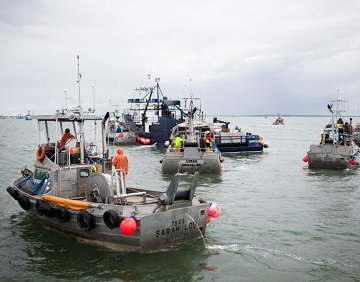 The cumulative wild sockeye salmon harvest through the end of July in Bristol Bay, Alaska, currently sits at 38 million fish, surpassing the forecast of 37 million fish. As anticipated, this season’s strong returns make 2023 one of the top five harvest seasons of the past 20 years – quite a follow-up to last year’s all-time record-breaking harvest. Bristol Bay is known as “America’s Wild Sockeye Source,” and is home to the largest wild salmon run on the planet, producing half the world’s supply of wild sockeye. “The strong harvests out of Bristol Bay in recent years are a testament to the responsible fisheries management of Alaska and the Bristol Bay fishing industry including fishermen, biologists, local community and seafood processors, and speak to the health and thriving future of the wild sockeye in the region,” >click to read< 13:08
The cumulative wild sockeye salmon harvest through the end of July in Bristol Bay, Alaska, currently sits at 38 million fish, surpassing the forecast of 37 million fish. As anticipated, this season’s strong returns make 2023 one of the top five harvest seasons of the past 20 years – quite a follow-up to last year’s all-time record-breaking harvest. Bristol Bay is known as “America’s Wild Sockeye Source,” and is home to the largest wild salmon run on the planet, producing half the world’s supply of wild sockeye. “The strong harvests out of Bristol Bay in recent years are a testament to the responsible fisheries management of Alaska and the Bristol Bay fishing industry including fishermen, biologists, local community and seafood processors, and speak to the health and thriving future of the wild sockeye in the region,” >click to read< 13:08
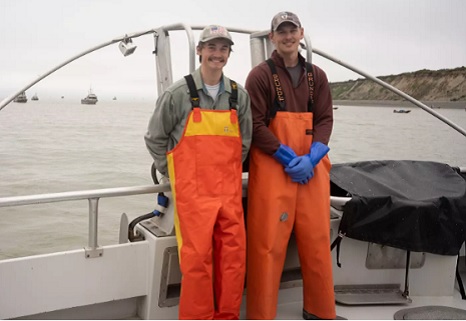
Young fishing crews question future of fishery
Wesley Blough and Jordan Manor are childhood friends, growing up crewing on their fathers’ boats in Bristol Bay. Now in their mid twenties, they live in Hoonah, Alaska and Bainbridge Island, Washington respectively but they return each season to deckhand. For the young fishermen, it’s like a family reunion. “Jordan and I have known each other now for nine years. And this is the only time we see each other,” Blough said, “Four weeks into the fishing season, processors posted a record-low base price of 50 cents per pound – less than half of last year’s price – igniting outrage and frustration among crews across the fishery. Jordan and Wesley’s fathers Darren Manor and Cheyne Blough helped organize the protest in the Naknek River on July 20, where over one hundred boats anchored up in a demonstration, calling on processors to increase the base price and transparency in the fishery. >click to read< 07:55
Photos: On the water with Bristol Bay’s protesting fishing crews
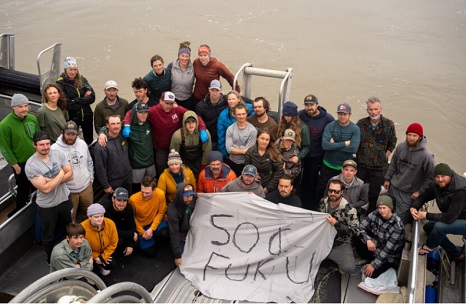 Commercial fishing crews joined together at the mouth of the Naknek River to peacefully protest the low price that processors are offering for this year’s sockeye salmon. They want processors to reconsider the 50 cents per-pound price, as well as more transparency in the fishery. The protest began at 6:00 AM on Thursday, July 20, and lasted through the day. >click to see the photos< 11:33
Commercial fishing crews joined together at the mouth of the Naknek River to peacefully protest the low price that processors are offering for this year’s sockeye salmon. They want processors to reconsider the 50 cents per-pound price, as well as more transparency in the fishery. The protest began at 6:00 AM on Thursday, July 20, and lasted through the day. >click to see the photos< 11:33
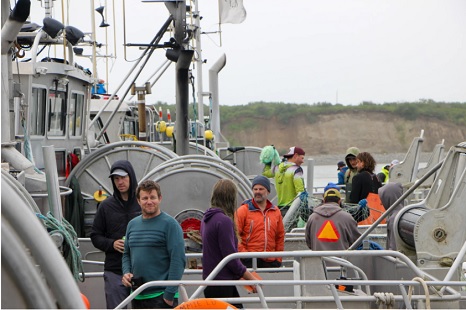
Bristol Bay fishermen protest low base price, lack of transparency
By 9 am, over one hundred boats are anchored in the Naknek River entrance, some after a night of fishing the Naknek-Kvichak. Ivan Basargin of the fishing vessel Top Notch is one of them. He’s here to join the demonstration against this year’s low price. Standing in the wheelhouse of a boat he built, he says this year’s low-price hits hard. “I’m going to pay my workers. I’m going to pay my bills. As far as living expenses, I haven’t decided yet. This 50 cents that I get, when I get home, it’s going to be a wash. I’m not going to have any money in the bank saved,” he said. Organizers of the protest are calling on processors to reconsider and improve the base price this season from 50 cents per pound, less than half of last year’s price. “If they know we can fish for 50 cents, we’re going to get paid 30 cents next year,” he said. “That will happen if we don’t do anything. Like today – this is a peaceful protest. We’re not trying to block people or anything. We’re just trying to show the world that we’re hurting, and we need some help.” Basargin says processors are claiming they are struggling financially too but he hasn’t seen evidence of this struggle. >click to read< 17:15
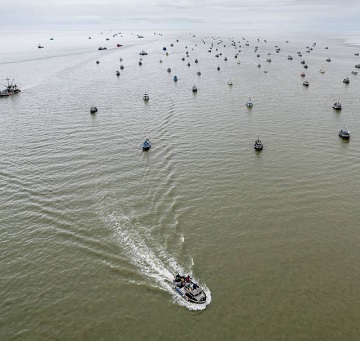
Alaska salmon fishermen fume over low prices, but processors say they’re hurting too
Aboard the F/V Five Star, his boat, Danielson and his deckhand put away as many pounds of fish as they could. They had no breakdowns. But his seafood processor is paying him 70 cents per pound for his salmon, half of last year’s price which means that instead of his usual six-figure haul for a summer of hard work, he might only break even, or go home to his family in Washington with $10,000, if he’s lucky. He added: “We’re up against something that’s out of our control, and that’s the processors killing us here.” In the past few weeks, thousands of fishermen across the state have found themselves in a similar predicament,,, Photos, >click to read< 08:52
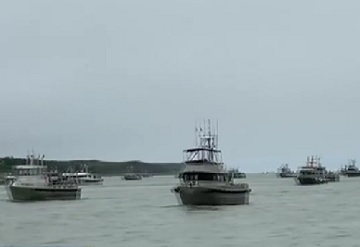
Bristol Bay fishermen protest processors’ low sockeye market price — 50 cents per pound
Some Bristol Bay fishermen are furious over the 50 cent per pound market price for sockeye salmon that Bristol Bay processors are hitting them with. Now the fishermen are protesting over a market price they received 40 years ago — a price some fisherman said could force the industry into a downward spiral, and that action needs to be taken. On Thursday morning more than 60 fishing vessels lined the Naknek River in solidarity. Protest spokesperson Cheyne Blough said the protest was announced on Facebook when the processors declared the base price earlier this week. Blough said the 50 cent per pound market price isn’t enough for fishermen to recover their costs, and could put some out of business. Video, >click to read< 07:45
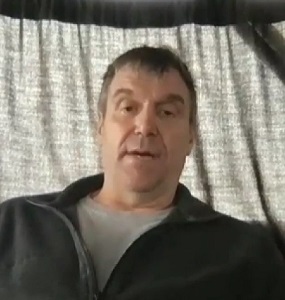
Bristol Bay fishermen up in arms against lower salmon prices, will protest
Commercial fishermen in the Bristol Bay region are voicing their displeasure against recent prices of sockeye salmon. According to fisherman Cheyne Blough, the price of sockeye salmon hovered around $1.20-$1.50 per pound, but as of recently, the price dropped to 50 cents. “We all expected less than last year. But we had no clue it was gonna be basically kind of bankruptcy prices,” Blough said. Since then, Blough along with several other commercial fishermen have set up a protest that will happen on Thursday, where fishermen will line up their boats in front of the Naknek River, in protest of the lowered prices. Video, >click to read< 07:50
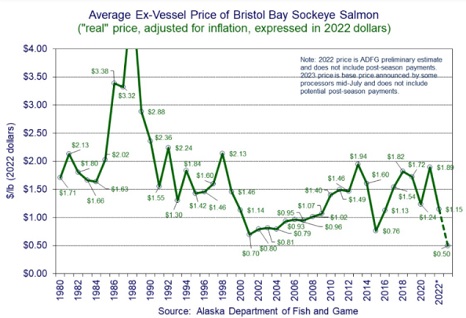
Bristol Bay bust – Bristol Bay salmon prices hit rock bottom
Prices paid commercial fishermen for their catches of wild, Bristol Bay sockeye salmon have just set a modern record low of 50 cents per pound. That’s only three cents per pound less than the average price paid for a Southeast Alaska pink salmon – or humpy as Alaskans usually call the smallest and blandest tasting of the Pacific – in 2018, according to Alaska Department of Fish and Game data. With a correction for inflation, that old humpy would now be worth 8 cents more per pound than a Bristol Bay sockeye. The last time the Bay saw anything like this was more than two decades ago when the sockeye price hit 42 cents per pound. Once inflation adjusted, however, those fish had a value of 70 cents per pound – 20 cents more than what Trident Seafoods and other processors are now offering. >click to read< 07:53






